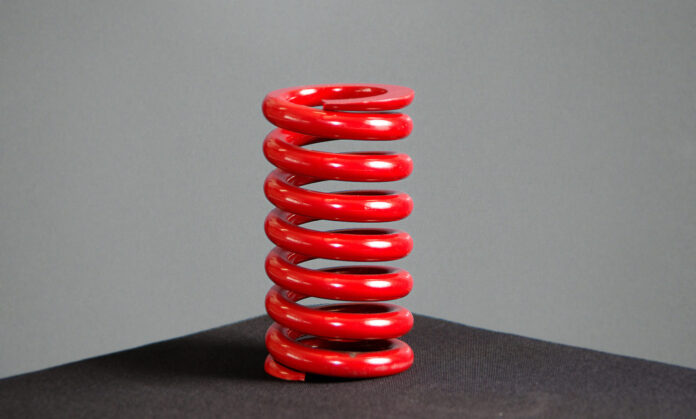Compression springs are versatile and have a ton of different applications in manufacturing. Here we explore some of the most common uses for compression springs, and how you can put them to work in your own production line.
What are compression springs?
Compression springs are a type of spring that is designed to compress or push down. They are commonly used in automotive suspension systems, but can also be found in electrical switches, pens, and mouse traps.
When a force is applied to the ends of a compression spring, it causes the coils to compress and the spring to become shorter. The amount of force required to compress a spring is known as its spring rate.
Compression springs are made from a variety of materials, including steel, stainless steel, and bronze. They can come in a variety of sizes and shapes, depending on their intended application.
How do compression springs work?
Springs are one of the most essential components in many mechanical devices, from small toys to complex machines. A spring is a flexible object that stores energy and can be compressed or extended.
When a force is applied to compress a spring, the spring stores energy in the form of potential energy. This potential energy is released when the force is removed, and the spring expands back to its original shape. The amount of force required to compress a spring depends on the stiffness of the spring, as well as its size and length.
In general, larger springs or springs with a higher stiffness require more force to compress. Compression springs are often used in shock absorbers, which help to absorb impact and protect delicate mechanical components.
These springs are also used in pens, mouse traps, and many other common devices. Thanks to their versatility and relatively simple design, compression springs are one of the most widely used types of springs in the world.
The benefits of compression springs
Compression springs are a type of spring that is often used in industrial settings. When compressed, they provide a force that can be used to power devices or machinery. In addition, they can be used to absorb shock or vibration, making them ideal for use in high-stress environments.
Compression springs are also relatively simple to manufacture, which makes them a cost-effective option for many applications. Despite their widespread use, compression springs do have some limitations. They can only provide linear force, and they tend to wear out over time. However, for many applications, they are an excellent choice.
The most common uses for compression springs in manufacturing
Compression springs are one of the most common types of springs used in manufacturing. They are generally used to store energy or keep a force applied to an object. When the spring is compressed, it stores energy that can be released when needed.
Compression springs are often used in such applications as car suspensions, electrical connectors, and lids on bottles and cans. The most common material used to make compression springs is steel, but they can also be made from other materials such as brass, bronze, and even plastic.
No matter what material they are made from, compression springs must be strong enough to withstand the forces they are subjected to. As a result, they are typically made from high-strength materials that can resist deformation.
How to get started with using compression springs in your own production line
Here’s a quick guide on how to get started with using compression springs in your own production line:
First, you’ll need to gather some materials. Compression springs come in a variety of sizes and shapes, so you’ll need to decide what size and type you need for your production line. You can usually find these springs at your local hardware store or online. Once you have your springs, you’ll need something to compress them with. A simple hand held compressor should do the trick.
Next, you’ll need to install your compression spring. This is usually done by threading one end of the spring through a hole in the production line and then screwing it into place. Make sure that the spring is tight so that it doesn’t slip out during operation. Once the spring is installed, you’re ready to start using it.
Compression springs are a versatile and essential part of any production line. With a little know-how, you can easily install and use them in your own line. Be sure to check out our other blog posts for more tips and tricks on setting up your own production line.






